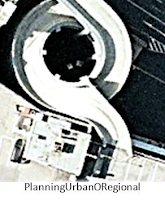An exemplary case of PPP project - surface
transport !

Though there are already provisions which suggests autonomy in O&M contracts to certain extent at present, but apparently there is further need of functional, financial and decision making autonomy in operation and maintenance (O&M)plan including concerned O&M agency, regarding any given infrastructure project, specially were public safety is a concern, an autonomy to the extent beyond conventional scopes of O&M contracts.
Why
this thought even worth consideration and review? Because lack of autonomy can
restrict O&M agencies to take prompt critical decisions or can encourage
them to unnecessarily prolong, manipulate or ignore some of the important
decisions and actions demanding urgency and which are vital for health of
project and safety of users and which might otherwise get delayed caught in the complexity of paperwork.
For instance, an expressway O&M agency can escape from taking responsibility of mishaps and causalities blaming it to
faulty road design by the original infrastructure design agency involved, while design agency can shy away from responsibility saying safe operation of system is in scope of O&M
agency or may be it is due to bad maintenance, meanwhile life of commuters would be constantly at stake. But with higher level of
autonomy O&M agency can take vital decisions and actions on their own like- post functional design modification in case of expressway, infrastructure
retrofit, conducting safety audit and associated changes, life safety
installations and safety enforcement measures which can prevent those traffic accidents for example. Also autonomy comes with implied accountability, so now the O&M agency while enjoying
the autonomy will also feel a sense of responsibility both morally and legally towards minimizing and
preventing those expressway mishaps and can be held accountable in case such
events occur and their performance can also be linked to their monetary gain/ penalty provisions,
credit rating ranking, pre-mature termination of contract etc. hence creating a
scope of active, innovative and higher performance standards in this new O&M
environment.
There
has to be increased level of autonomy for O&M agencies to innovate and to
take certain fiscal decisions on their own, which might be vital for public safety
and absorption of unperceived growth, autonomy of technology integration to
leverage technological opportunities which might have been unavailable at the time of
conception and design of project, autonomy to conduct required design changes
and retrofit based on peculiar first hand regional experiences gained in course
of operation. Of course this strengthened decisive power of should come with certain
administrative supervision and stakeholder’s say.
This
allocation of autonomy seems justifiable because no one else knows the actual
functional and fiscal health of said project, regional and local constraints
and infrastructure gaps etc. better than those who are operating and maintaining the
said project and assets 24X7 and are in constant contact of end users, knowing it
better than even those who originally conceived and built the project. Autonomy if constrained or hampered or for namesake, specially at policy and post functional level, scope of O&M
assumes a mechanical and procedural significance and restrict itself only to the
often under-perceived operational efficiency and safety level just to the rigid,
predefined performance standard with little scope
for innovation in terms of physical infrastructure modification, procedural and
strategic retrofit and scope of maintenance remains only limited to restoring
the degraded infrastructure to its somewhat originally perceived state. O&M
will have to be much more than the established notion of routine work as
prescribed in the O&M manual or as described in present scope of contract. A wholesome O&M process specially in urban and regional infrastructure projects has to be a dynamic process, a learning experience, continually reinventing
itself as per dynamic regional growth, absorbing economic changes and
technological advancement, streamlined to the long term vision of regional
growth.






































